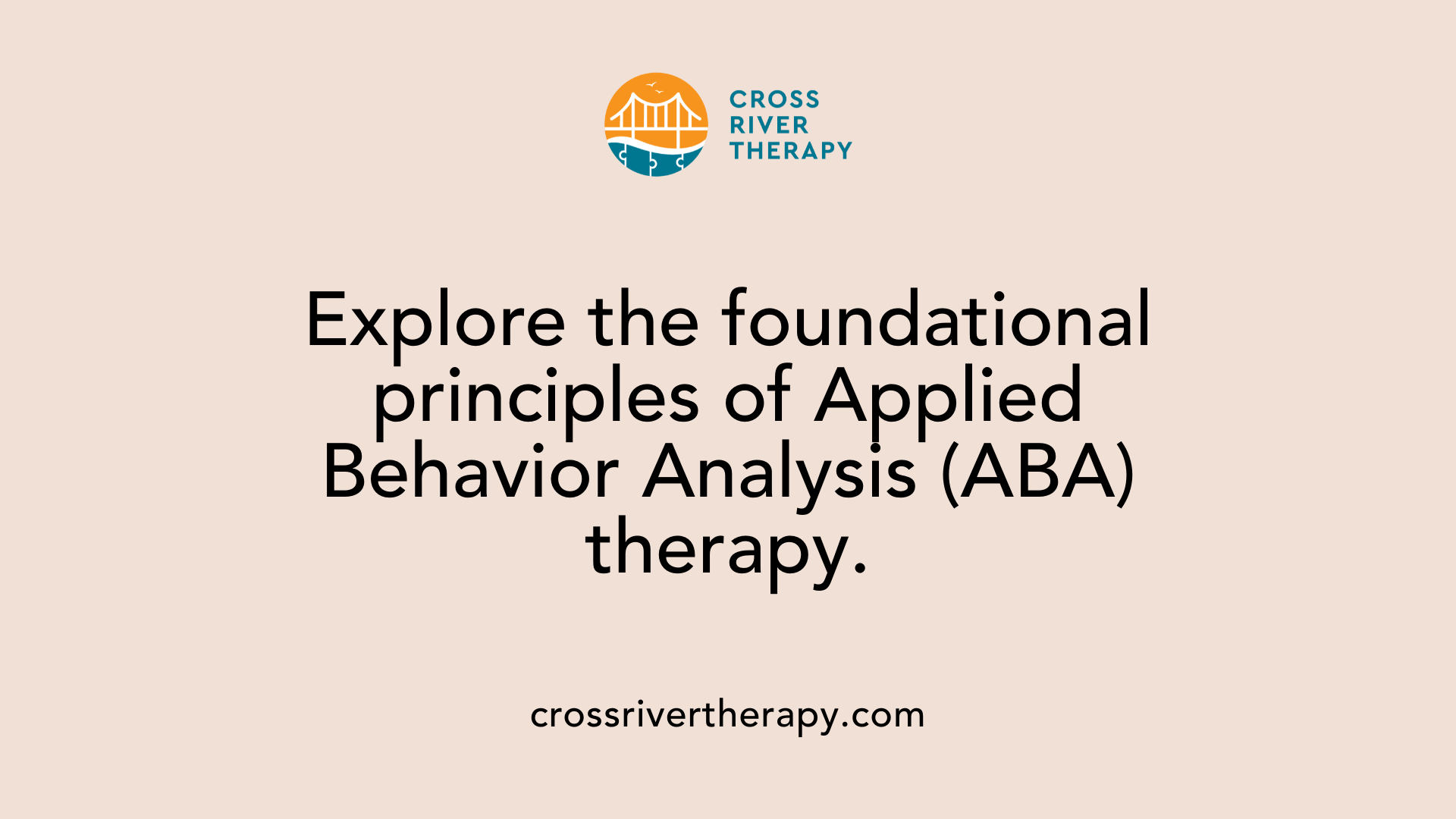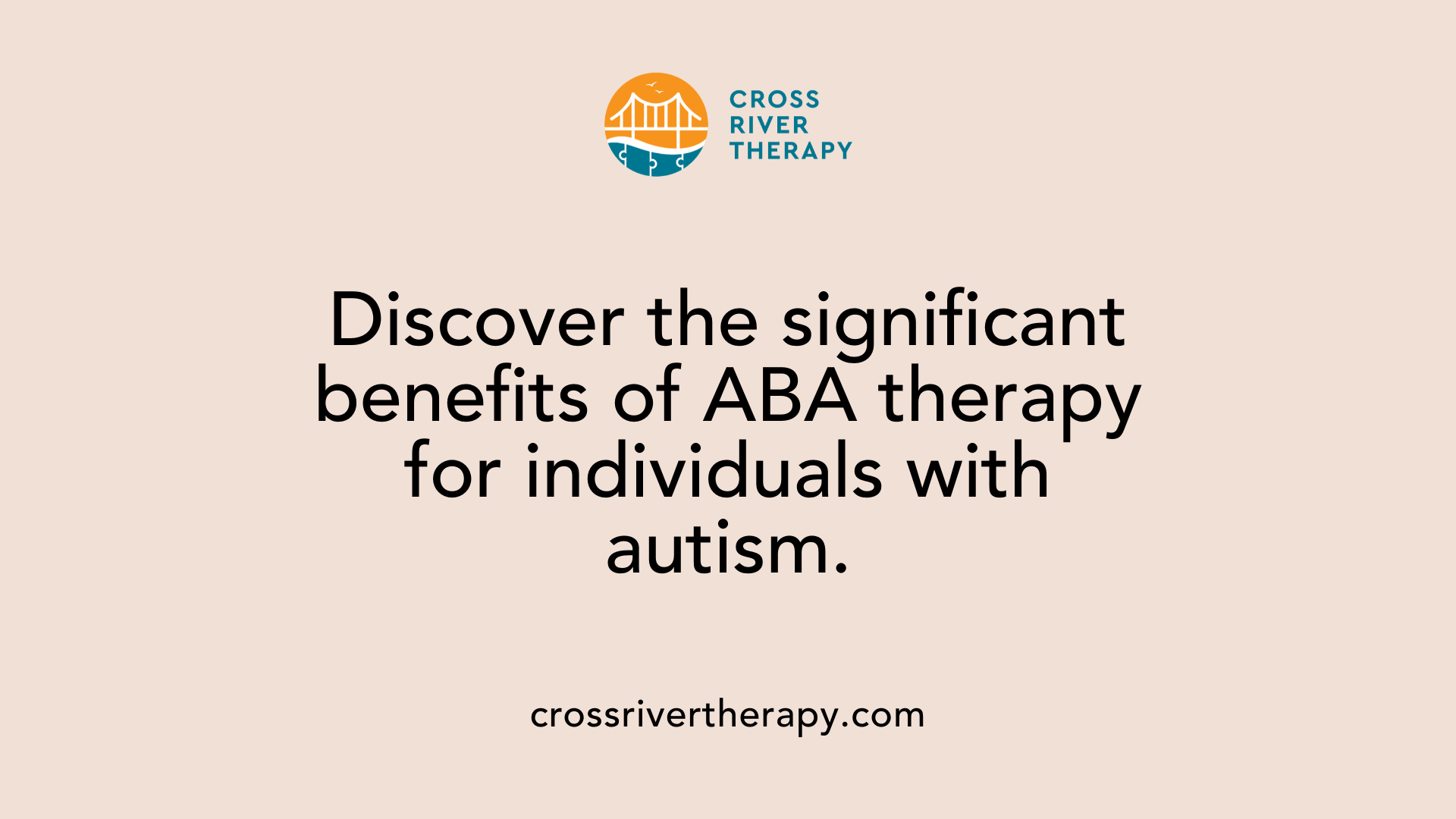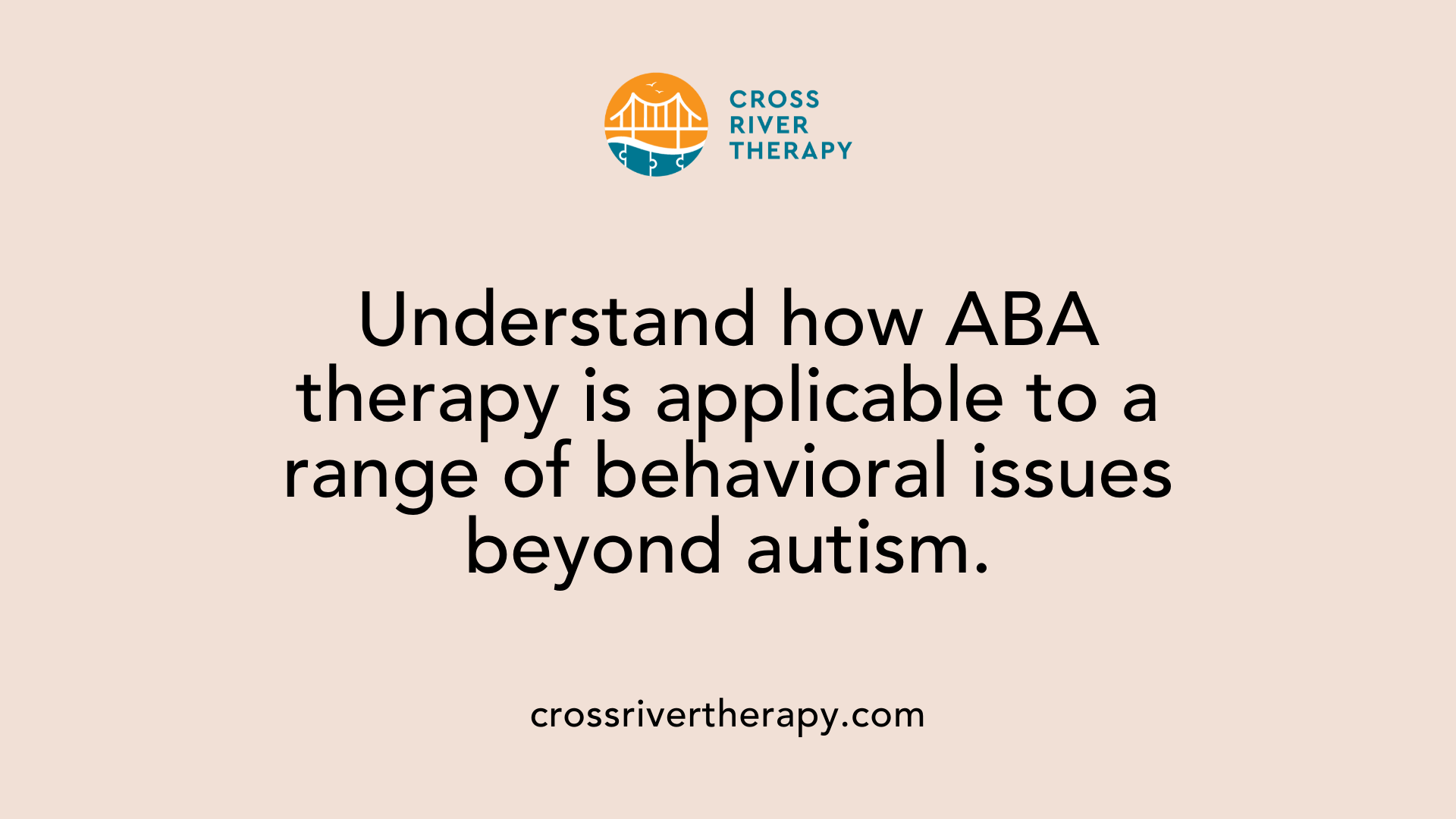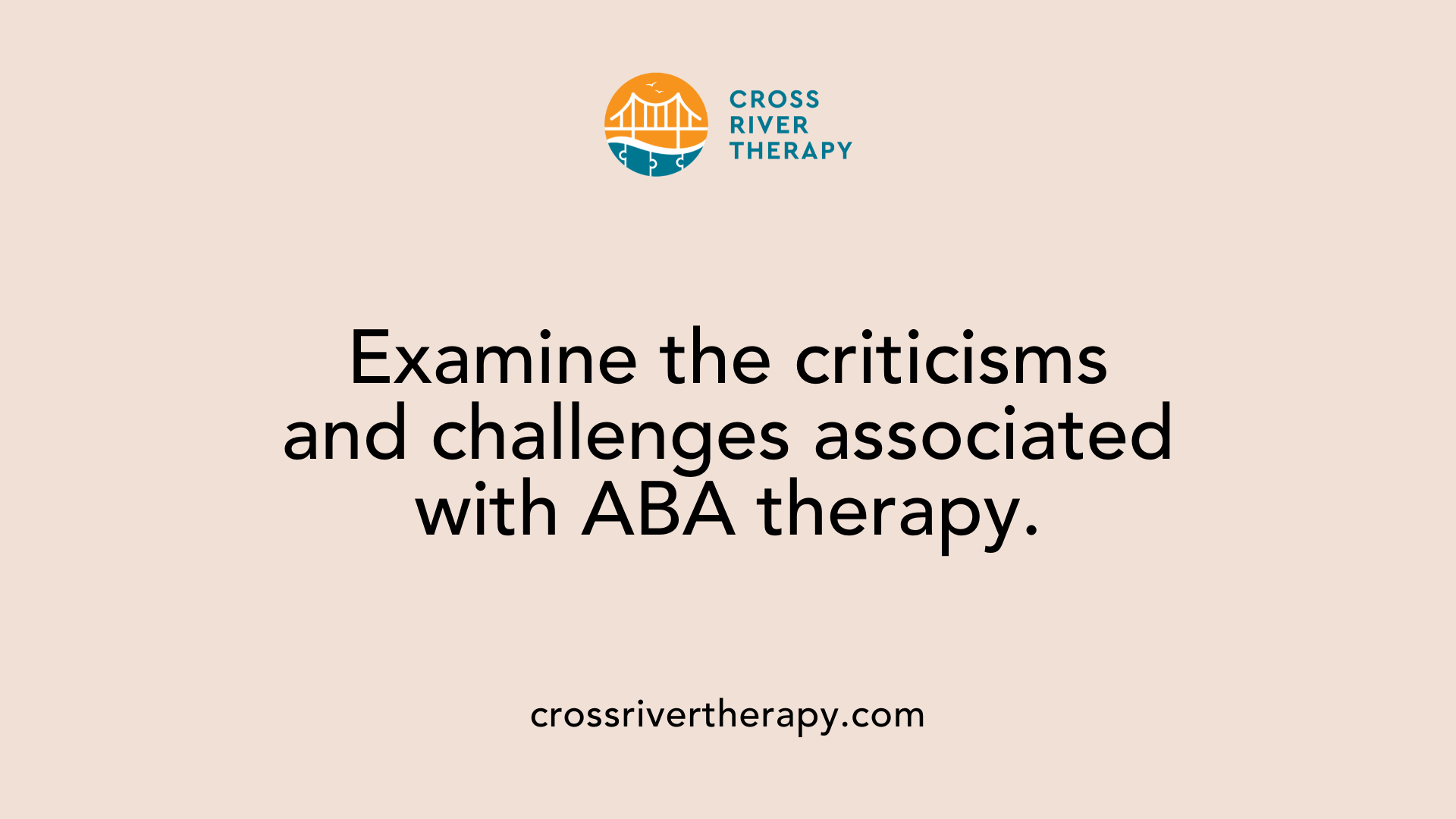The Benefits of ABA for Autism
Exploring Applied Behavior Analysis for Autism Spectrum Disorder
Understanding ABA Therapy
Applied Behavior Analysis (ABA) is a therapeutic approach widely used to assist individuals with Autism Spectrum Disorder (ASD) in enhancing positive behaviors while reducing negative ones. It leverages the principles of learning behavior and applies techniques tailored to each individual's unique needs. Recognized as an evidence-based practice, ABA has been instrumental since the 1960s in helping children with autism improve communication, social, and daily living skills.
Fundamentals of ABA

What is ABA therapy for autism?
Applied Behavior Analysis (ABA) therapy is a research-based approach designed to help individuals with autism and other developmental disorders by increasing positive behaviors and decreasing negative ones. It utilizes techniques such as positive reinforcement to encourage desirable behaviors while providing structured interventions tailored to each child's unique needs. ABA aims to enhance skills in areas like communication, social interaction, and daily living, making it a comprehensive treatment option. The therapy often involves assessments by qualified professionals to create individualized plans that address specific challenges. Overall, ABA is recognized as an evidence-based best practice that can lead to significant developmental gains, especially when implemented intensively during early childhood.
Purpose of ABA
The primary goal of ABA therapy is to improve the quality of life for children with autism by increasing helpful behaviors—such as communication and social interactions—while reducing harmful behaviors that interfere with learning. This approach not only fosters independence but also prepares children to navigate everyday challenges successfully, making it a crucial intervention for promoting adaptive skills. Over the decades, ABA has adapted to focus more on enhancing the unique strengths of each child rather than merely conforming them to neurotypical standards.
Core strategies
ABA employs several core strategies, with positive reinforcement being one of the most significant. This entails rewarding desirable behaviors, whether through verbal praise or tangible items, encouraging children to repeat these actions in the future. Additionally, methodologies such as Discrete Trial Training (DTT) and Pivotal Response Treatment (PRT) guide the structured teaching of targeted skills. Each of these methods has a specific focus, with DTT emphasizing step-by-step learning and PRT facilitating skills in naturally occurring contexts.
Historical context
The roots of ABA can be traced back to the 1960s, a pivotal decade when researchers like Ivar Lovaas pioneered techniques to leverage behavioral principles in assisting children with autism. Early studies demonstrated that intensive, long-term ABA therapy could significantly improve language and social skills, marking the approach as a leading evidence-based intervention for Autism Spectrum Disorders (ASD). As the field evolved, modern ABA increasingly advocated for ethical practices, moving away from punitive methods towards an emphasis on positive experiences for learners.
Impact and Advantages of ABA

What does ABA do for autism?
ABA, or Applied Behavior Analysis, is a widely used therapeutic approach for individuals with autism that focuses on teaching essential skills and reducing harmful behaviors. It involves identifying specific behaviors and their triggers, and then using techniques such as positive reinforcement to encourage safer and more adaptive responses. ABA therapy is individualized and evidence-based, designed by qualified behavior analysts based on the unique needs and circumstances of the person receiving treatment. It aims to improve various areas such as communication, social skills, self-care, and play, thereby enhancing overall quality of life. High-quality ABA practices rely on collaboration with families and regular assessment of progress to ensure effective treatment.
Skill Development
One of the primary aims of ABA is skill development across multiple domains. Children undergoing ABA therapy often show significant improvements in:
Behavioral Improvement
Behavioral improvement is integral to ABA's design, focusing on increasing constructive behaviors while decreasing problematic ones. Positive reinforcement strategies, such as the token economy system, effectively promote desired behaviors, ensuring a nurturing yet structured learning environment.
Effectiveness
Research supports the effectiveness of ABA, with studies indicating that early and intensive intervention—ideally when therapy starts between ages 2 and 6—yields the best outcomes. Reports show that 63%-88% of studies affirm noticeable improvements across various metrics, highlighting ABA's potential to equip children with autism with essential skills, enhance communication, and reduce maladaptive behaviors. However, critiques suggest that the implementation challenges and the necessity for further large-scale studies remain crucial for refining this already impactful therapy.
Techniques and Methodologies in ABA

What are some examples of ABA therapy techniques?
Applied Behavior Analysis (ABA) employs a variety of techniques precisely designed to enhance the learning and behavioral skills of individuals with autism. Among these methods, positive reinforcement stands out as a fundamental strategy. This technique encourages desired behaviors by providing rewards or incentives, which can range from verbal praise to tangible prizes, motivating individuals to repeat those behaviors.
Another prominent methodology is Discrete Trial Training (DTT), a structured approach where skills are taught in one-on-one sessions. DTT breaks down complex tasks into smaller, manageable components, allowing children to master each step before progressing to more complex skills. This systematic instruction is pivotal, particularly in areas such as communication and social interaction.
To further enhance learning, task analysis is utilized within ABA, helping to dissect multifaceted tasks into simpler, sequential steps. This allows learners to focus on mastering each element, paving the way for greater independence and carryover of skills into various environments.
A frequently employed technique in ABA is the ABC (Antecedent-Behavior-Consequence) approach. This method analyzes the relationship between stimuli (antecedents) and the resulting behaviors, allowing practitioners to identify triggers and outcomes that help modify unwanted behaviors effectively. Additionally, techniques such as modeling, where therapists demonstrate desired actions for imitation, and the Picture Exchange Communication System (PECS) facilitate non-verbal communication, enhancing social skills.
TechniqueDescriptionPurposePositive ReinforcementRewarding desired behaviors to encourage repetition.Increase helpful behaviors.Discrete Trial Training (DTT)A structured approach focusing on teaching skills through one-on-one sessions and cognitive breakdowns.Enhance learning and communication skills.Task AnalysisBreaking complex tasks into smaller, recognizable steps to facilitate skill acquisition.Promote independence and ease of learning.ABC ApproachAnalyzes the relationship between triggers, behaviors, and consequences to facilitate behavior modification.Identify and manage behavioral triggers.
These methodologies, rooted in evidence and tailored to meet individual needs, significantly enhance the effectiveness of ABA therapy.
Applications Beyond Autism

Is ABA therapy only for autism?
Applied Behavior Analysis (ABA) therapy is not limited solely to individuals with autism. While it is widely recognized for its effectiveness in treating autism spectrum disorder (ASD), its utility extends far beyond this demographic. ABA techniques are invaluable in addressing various behavioral issues across different diagnoses, including:
The adaptability of ABA methodologies, including reinforcement techniques, allows for their application across diverse populations, encompassing neurotypical children and even adults seeking behavioral modification. Although insurance often necessitates an autism diagnosis for coverage, many therapists are equipped to assist those exhibiting behavioral challenges, regardless of diagnosis.
In essence, ABA represents a multifaceted approach, enhancing behaviors for a broad spectrum of individuals, transcending the confines of autism treatment.
Versatility of ABA
The versatility of ABA therapy lies in its evidence-based framework, which emphasizes systematic observation and data collection to tailor interventions. ABA practitioners create individualized plans that address a person's unique challenges and goals. This includes enhancing communication skills, social interactions, self-regulation, and daily living skills, catering to a wide variety of settings and populations. As ABA continues to evolve, its principles are increasingly applied to broader behavioral contexts, demonstrating substantial potential for enhancing quality of life across various domains.
Potential Drawbacks and Criticisms

What are the potential criticisms or disadvantages of ABA?
ABA therapy, while widely recognized as an effective treatment for children with autism, is not without its criticisms and drawbacks. One primary concern is the time and cost associated with the therapy. Families typically commit to 10 to 40 hours of therapy each week, which can place significant demands on both time and resources. This level of involvement can be challenging, particularly for families who may face limited insurance coverage for such services.
The commitment to ABA therapy often requires not just financial resources but also consistent parental involvement, which can strain family dynamics.
Another ethical consideration stems from the techniques employed in ABA. Critics argue that the reliance on rewards and, in some historical contexts, punishments can make some families uncomfortable. Although modern ABA practices have largely abandoned punitive measures, the focus on compliance and behavior modification can be perceived as prioritizing conformity over individual expression.
Moreover, there is a concern regarding the long-term effectiveness of ABA therapy. While studies indicate that children can experience significant improvements during treatment, there is limited research tracking the sustainability of these gains over time. Families may be left grappling with uncertainty about how their children will cope without ongoing support.
IssueDetailsImpactTime Commitment10 to 40 hours of therapy weeklySignificant strain on family schedulesCost of TherapyInsurance coverage varies; many families face high out-of-pocket expensesFinancial strain, potential limits on accessEthical ConsiderationsTechniques may involve rewards/sanctions causing discomfort among familiesQuestions about prioritizing complianceLong-term EffectivenessLimited research on the sustainability of benefits beyond therapyUncertain future for children post-intervention
In light of these considerations, it is critical for families to engage deeply with the therapeutic process, ensuring that the selected ABA approach aligns not only with the child's needs but also with family values and comfort levels.
Controversies Surrounding ABA
Is ABA therapy harmful or controversial?
Applied Behavior Analysis (ABA) therapy is lauded for its structured, evidence-based approach to helping children with autism develop essential skills. It emphasizes increasing helpful behaviors while reducing harmful ones, demonstrating effectiveness in improving various aspects of learning and social interaction. However, it is not without its controversies. Critics argue that the rigidity of its methods can suppress natural autistic behaviors and promote conformity to neurotypical standards.
Historically, certain techniques employed in early ABA were punitive and deemed harmful, leading to a significant backlash against the method. Modern ABA practices, however, have shifted away from these punitive approaches, now focusing on positive reinforcement and engagement in the learning process. Nevertheless, the emphasis on compliance has raised ethical questions, especially among autistic self-advocates who feel that ABA risks disregarding the individuality of autistic children.
In response to these criticisms, proponents of contemporary ABA advocate for practices that are individualized and respectful of each child's neurodiversity. They argue that the goal is not to change how neurodiverse children think or feel but to equip them with skills for greater independence and social integration. Despite the ongoing debate, ABA's effectiveness and prominence in autism therapy remain significant, yet it calls for critical examination of its methods and their impacts on child development.
Key Points of Debate
AspectSupporters' ViewCritics' ViewMethodsPositive reinforcement can foster growth and learning.Some methods may suppress natural behaviors.EthicsModern practices avoid punitive techniques.Past methods included harmful practices, raising concern.GoalsAims for skill development without altering identity.May push for conformity to neurotypical standards.IndividualizationHighly customized therapy plans.Concerns about rigidity in application across cases.
Personalization in ABA Services
Tailored Treatment Plans
Applied Behavior Analysis (ABA) therapy is fundamentally personalized. Practitioners customize treatment plans based on thorough assessments conducted by Board Certified Behavior Analysts (BCBAs). These experts evaluate each child's unique needs, abilities, and behavior patterns to formulate specific goals that guide intervention. By focusing on areas such as language skills, social interactions, and daily living abilities, ABA aims to maximize each child’s potential in ways that resonate with their individual strengths.
Practitioner Qualifications
The effectiveness of ABA therapy heavily relies on the expertise of its practitioners. BCBAs are specifically trained in behavioral principles to ensure that interventions are not only scientifically sound but also ethically administered. Their qualifications include extensive education in behavior analysis and supervised practical experience, allowing them to assess progress accurately and adjust strategies as needed. This professional training plays a crucial role in tailoring interventions effectively to promote meaningful change in children with autism.
Insurance and Accessibility
Insurance Coverage for ABA Services
Insurance coverage for Applied Behavior Analysis (ABA) therapy varies widely among private health plans, but many are mandated to cover ABA services for children diagnosed with autism. Medicaid is also required to cover medically necessary treatments for children under 21, providing a critical safety net for families. However, discrepancies in coverage can lead to challenges for families seeking consistent care.
Access to ABA Services
Accessibility to ABA therapy presents significant hurdles. Data indicates that about 13% of children referred for ABA never receive the treatment. Moreover, while 66% initiate ABA, only 46% remain in services for a full 24 months. The low access and adherence rates underscore the need for systemic improvements to ensure children receive the full benefits of this therapy. Families often encounter barriers related to service continuity and the ability to meet prescribed treatment hours, which are essential for efficacy.
ChallengeDescriptionImpactCoverage VariabilityPrivate health plans differ in ABA coverage; Medicaid covers medically necessary treatments.Limits access for some families.Low Treatment Utilization13% of referred children never receive ABA; only 46% remain in therapy for 24 months.Reduces therapeutic effectiveness.High Discontinuation RatesMany families struggle with the need for high session hours; only 28% receive an adequate dosage of treatment.Hinders potential gains in treatment.
Despite these challenges, ongoing advocacy for improved access and insurance coverage reflects a growing recognition of the importance of ABA therapy for children with autism.
Conclusion: Weighing the Benefits and Challenges
ABA therapy remains a prevalent treatment for autism, renowned for its structure and the potential improvements it can yield in behaviors and skills. While its effectiveness is supported by a significant body of research, considerations regarding its cost, accessibility, and controversies should not be overlooked. Families and patients need to navigate these factors carefully, aiming to find an approach that respects the individual's needs and promotes positive outcomes.



